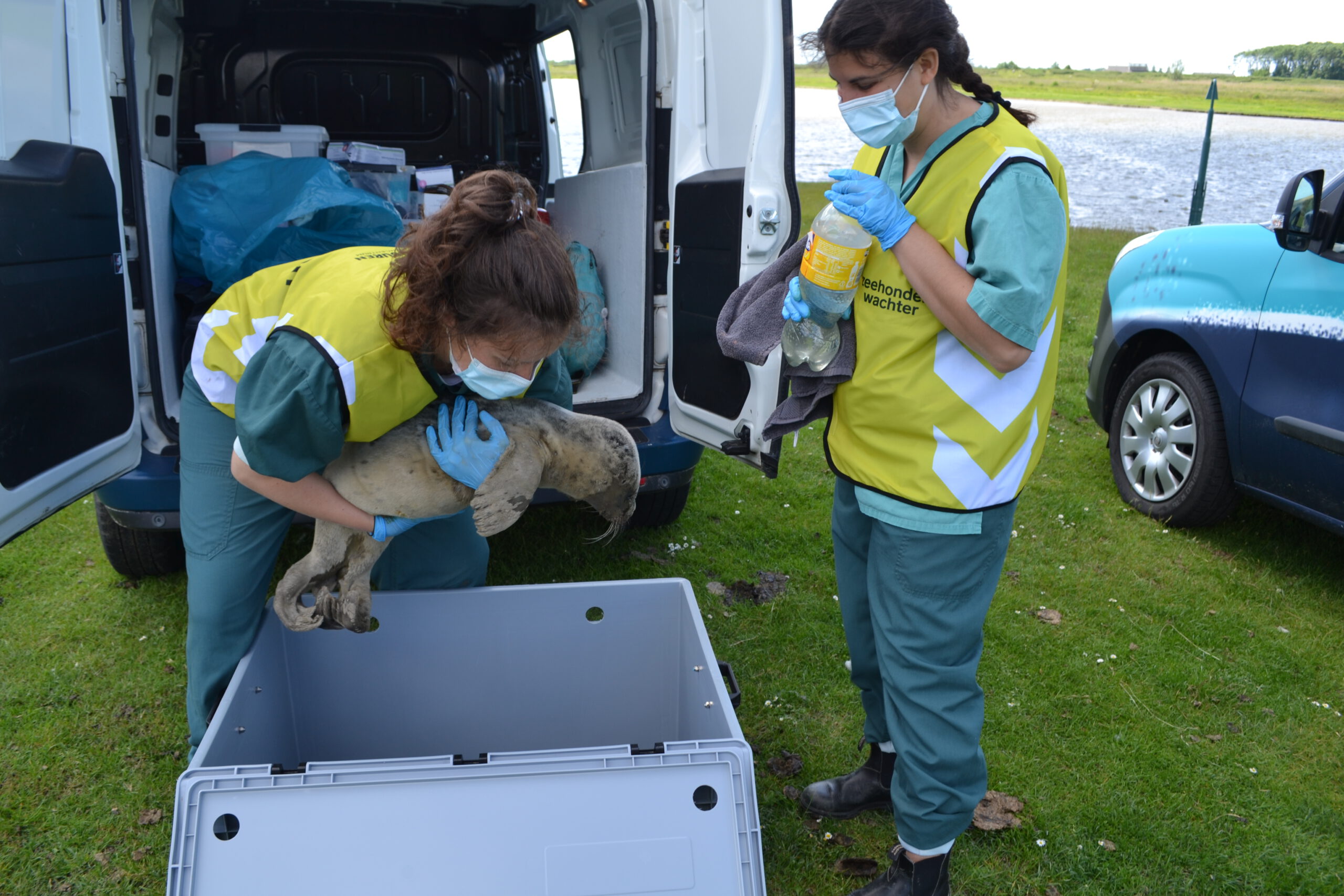What do we do with your report?
If you come across an injured or weakened seal, you can file a report with us. This report is actually the first step in helping a seal that is in trouble. On this page, we explain what happens when you call us about a stranded seal.

Your call comes in by a stranding coordinator
When you report a stranded seal to us, you get our stranding coordinator on the phone. We ask questions about the seal's location and condition. And we ask you to keep your distance.
We send in a seal guard
Once we have the location and a description of the seal, we call nearby seal guards . One of the seal guards goes to the seal's location.
The seal guard consults with us on the seal's condition
Op locatie maakt de zeehondenwachter foto’s en filmpjes van de zeehond. Die stuurt de zeehondenwachter dan door naar onze strandingcoördinator, zodat die het kan overleggen met onze dierenartsen. Samen bepalen we hoe het met de zeehond gaat en of het nodig is om hem op te vangen.
There are then a number of situations that may arise:
-
1: Nothing needs to happen with the seal
The seal may just need rest. If it can just do that on the beach, the seal guard asks bystanders to leave the seal alone. The animal can then recuperate and return to the sea later.
-
2: The seal needs to be moved
If there are too many people at the site, it is difficult for the seal to rest. In such cases, we ask the seal guard to put the seal in a quieter place. There, the animal can rest and then move on.
-
3: Seal is entangled but can be helped on site
Seals entangled in nets do not always need to be rehabilitated. We can often help them on the beach if they are not seriously injured. The seal guard will catch the seal and cut the net loose. Afterwards, the seal can immediately go about its business again.
-
4: It's a pup, but we don't know (yet) where the mother is
Seal mothers sometimes leave their pups behind when they need to eat something themselves. The pups sometimes lie alone for hours, but the mother almost always returns. To see if this is the case, the pup goes into observation. This means that every so often, the seal guard goes to check on the pup.
Is the mother still not back after 24 hours? Then she has probably abandoned her pup. In that case, the seal guard will take the animal to the Sealcentre.
-
5: The seal is sick, but may be able to get better himself
We keep an eye on the seal to see if the animal goes back into the water on its own. As with the pups, the seal guard goes back every few hours to see how the seal is doing.
Only if it is still doing badly after 24 hours will we take the seal in.
-
6: The seal is so seriously injured or sick that it needs to go to the shelter immediately
In ernstige gevallen is er geen tijd om het dier te observeren. Of moet het dier voor het eind van de observatieperiode al mee. Bijvoorbeeld als deze ernstig gewond is. Om de zeehond te redden, moeten we het direct naar het Zeehondencentrum brengen. De Strandingcoördinator doet dit alleen in overleg met onze dierenartsen. Zij nemen altijd het laatste besluit over het wel of niet opvangen van zeehonden.
The seal guard brings the seal to us
The seal guard is the person who will catch and transport the animal. They are trained for this and have the right equipment for it. We are in constant contact with the seal keeper so that we can make the best choice for the seal. It is therefore very important to listen carefully to what the seal guard says.
How do we know if a seal is already known to us?
When we have a seal in observation, the seal guard does not keep looking at the animal the whole time. Using a bright orange-, yellow-, or green-coloured paint, we put a mark on the seal's back. We can immediately recognise the seal by the mark when we return to location.
The best thing to do in this case is to give the seal a rest. Always keep 30 metres away, make sure dogs are leashed. Also try to keep others at a distance. It is not a bad idea to call us as soon as possible, but it is not necessary.